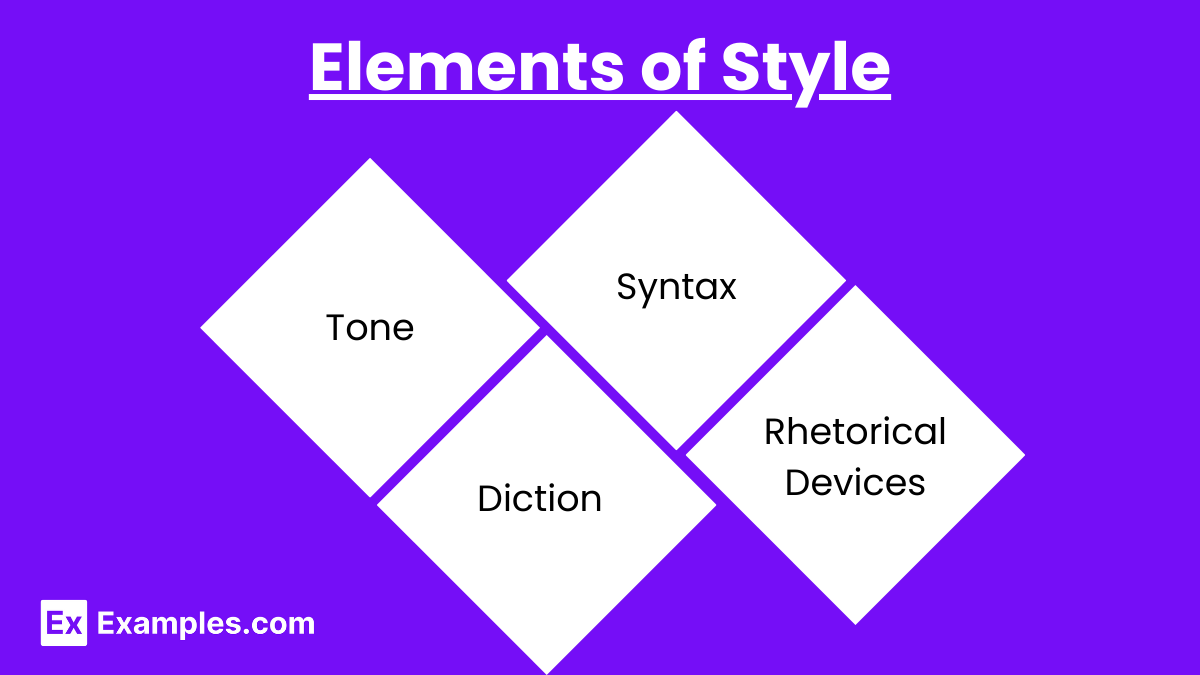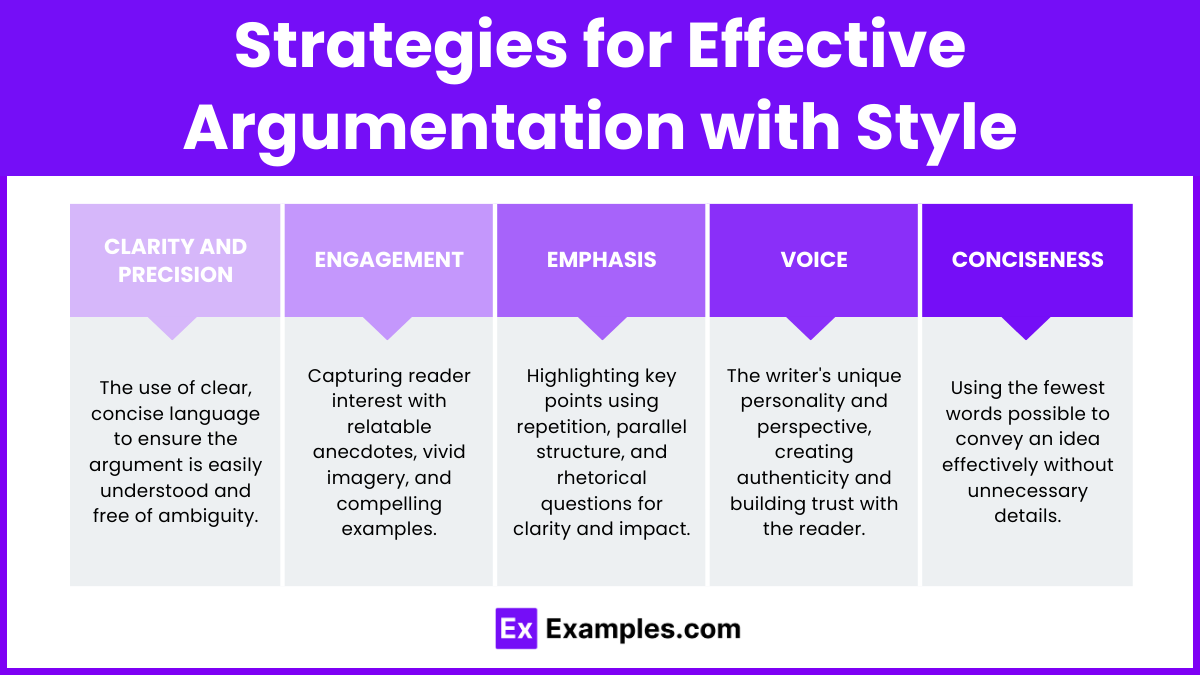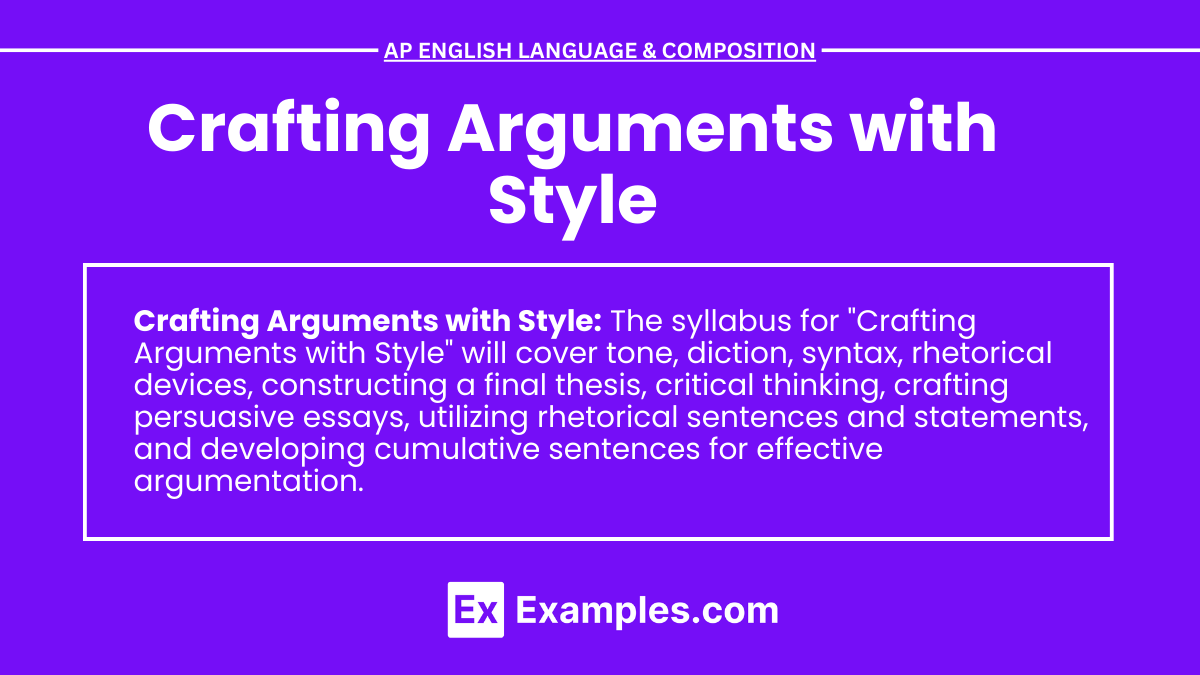In the realm of AP English Language and Composition, crafting compelling arguments is essential not only for academic essay writing but also for argumentative speeches. This skill requires an understanding of how to effectively use a rhetorical sentence to persuade and engage the audience. As students prepare for the AP exam, mastering the ability to present logical arguments with a stylistic flair can set their work apart. Whether writing a formal academic essay or delivering a passionate argumentative speech, the integration of style elements such as tone, diction, and syntax is crucial. This guide delves into the nuances of crafting arguments with style, offering insights and techniques to elevate your writing and speaking in the context of AP English Language and Composition.
Free AP English Language and Composition Practice Test
Learning Objectives
By the end of this lesson on crafting arguments with style in AP English Language and Composition, students will be able to effectively develop a final thesis that is both clear and compelling. They will enhance their critical thinking skills to construct well-reasoned arguments. Additionally, students will learn to utilize a rhetorical sentence and rhetorical statement to add persuasive power to their writing. In the context of writing a persuasive essay, they will practice creating cumulative sentences to build and reinforce their arguments, ensuring their essays are engaging and stylistically sophisticated.
Understanding Style in Argumentation
Style refers to the way a writer uses language to achieve a specific purpose. It encompasses a range of elements including tone, diction, sentence structure, and rhetorical devices.
Key Terms:
Tone: The writer’s attitude toward the subject or audience.
Diction: The choice of words, which can be formal, informal, colloquial, or slang.
Syntax: The arrangement of words and phrases to create well-formed sentences.
Rhetorical Devices: Techniques used to persuade or impact the audience, such as metaphor, simile, hyperbole, and irony.
Elements of Style

Tone:
Establish an appropriate tone for the argument. This could be serious, humorous, passionate, or neutral, depending on the audience and purpose.
Avoid inconsistent tones that might confuse the reader.
Diction:
Choose words that are precise and effective in conveying the argument.
Be mindful of connotations and the emotional impact of words.
Avoid jargon or overly complex vocabulary unless it serves the purpose of the argument and suits the audience.
Syntax:
Use varied sentence structures to maintain the reader's interest.
Employ parallelism for emphasis and clarity.
Utilize periodic and cumulative sentences to build and reinforce arguments.
Rhetorical Devices:
Metaphor and Simile: Make comparisons to explain and persuade.
Anaphora: The repetition of a word or phrase at the beginning of successive clauses for emphasis.
Antithesis: Juxtaposing contrasting ideas in a balanced structure to highlight differences.
Alliteration and Assonance: The repetition of consonant or vowel sounds to create rhythm and emphasis.
Rhetorical Questions: Questions posed to provoke thought rather than elicit an answer.
Strategies for Effective Argumentation with Style

Clarity and Precision:
Ensure the argument is easy to follow and understand.
Avoid ambiguity and vague language.
Engagement:
Use anecdotes, examples, and illustrations to make the argument more relatable and engaging.
Employ vivid imagery to paint a clear picture in the reader’s mind.
Emphasis:
Highlight key points through strategic repetition, parallel structure, and rhetorical questions.
Use transitions to connect ideas smoothly and maintain the flow of the argument.
Voice:
Develop a distinctive voice that reflects the writer’s personality and perspective.
Be authentic and sincere to build trust with the reader.
Conciseness:
Be concise and avoid unnecessary words or overly long sentences.
Focus on delivering the argument effectively without superfluous details.
Examples
Example 1: Formal Argument
Thesis: "Climate change is the most pressing global issue of our time, requiring immediate and sustained action from all nations."
Tone: Serious and urgent.
Diction: Formal and technical.
Syntax: Complex sentences with parallel structure.
Rhetorical Devices: Use of statistics, expert testimony, and rhetorical questions to emphasize the gravity of the issue.
Example 2: Informal Argument
Thesis: "Everyone should have a pet because pets bring joy and companionship into our lives."
Tone: Light-hearted and conversational.
Diction: Informal and relatable.
Syntax: Simple and varied sentences to maintain a casual flow.
Rhetorical Devices: Anecdotes about personal experiences with pets, humor, and rhetorical questions.


